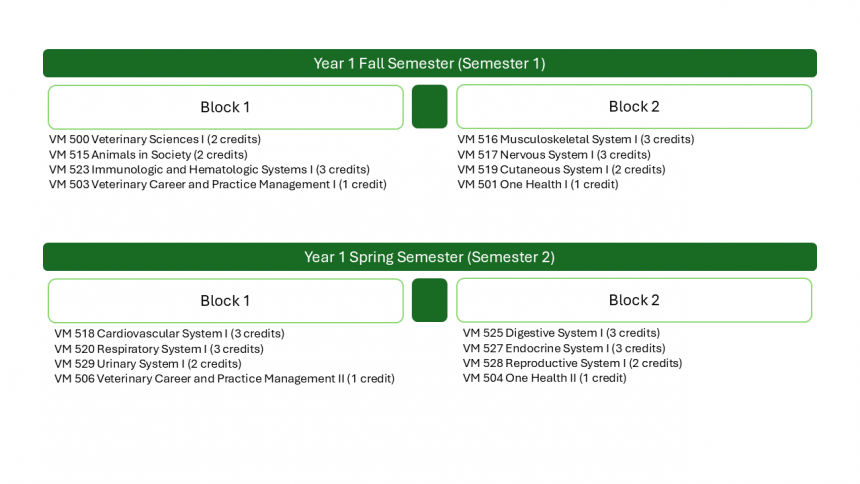DOCTOR OF VETERINARY MEDICINE PROGRAM Curriculum

Communicate effectively with lay or professionals about the roles of major nutrients in maintaining the health of domestic animals at different stages of life and activity levels. Be able to answer scientific questions and interpret the findings using EBVM and proper epidemiologic principles and concepts.
Students will identify how veterinarians will interact with diverse values within society, explain how cultural experiences shape individual beliefs, and behaviors,and explain the various roles and duties of veterinarians within the regulatory structure and how all of these components impact interactions with people and animals.
Structure and function of the immunological and hematologic systems in health.
Students will learn key elements in advancing their management and financial skills to be applied within your future career.
Identifies normal structures and functions of the musculoskeletal system and related structures in live animals, necropsy specimens, or diagnostic and microscopic images.
In the context of a case scenario or through examination of a live animal, interpret the results of a complete neurologic or ophthalmologic examination (i.e. localize abnormal findings to specific functional regions of the nervous system). With this knowledge be able to communicate to diverse audiences the correct terminology and describe the clinically relevant structures, functions, and their relationships.
Identify and explain the physiologic mechanisms regulating systemic and organ functions to the extent they are applicable to clinical medicine and the understanding of the pathophysiologic mechanisms of common disorders of the skin With this knowledge communicate to a lay person and colleague clinically relevant structures of the skin.
Communicate effectively with diverse audiences and understand the important relationship between one health and the veterinary profession.
Identifies normal structures and functions of the cardiovascular system in live animals, necropsy specimens, or diagnostic and microscopic images and describes the relationship between the cardiovascular system and other systems in domestic animals.
Structure and function of the respiratory system in health.
Structure and function of the urinary system in health.
Health teams, leadership, workplace behavior, DVM job market, and the process of securing DVM employment.
Structure and function of the digestive system in health.
Structure and function of the endocrine system in health.
Structure and function of the reproductive system in health.
Veterinary medicine and public health. Introduction to veterinary interactions with the public, including disaster response and crisis communication. Relevant laws, regulations, and regulatory agencies.
